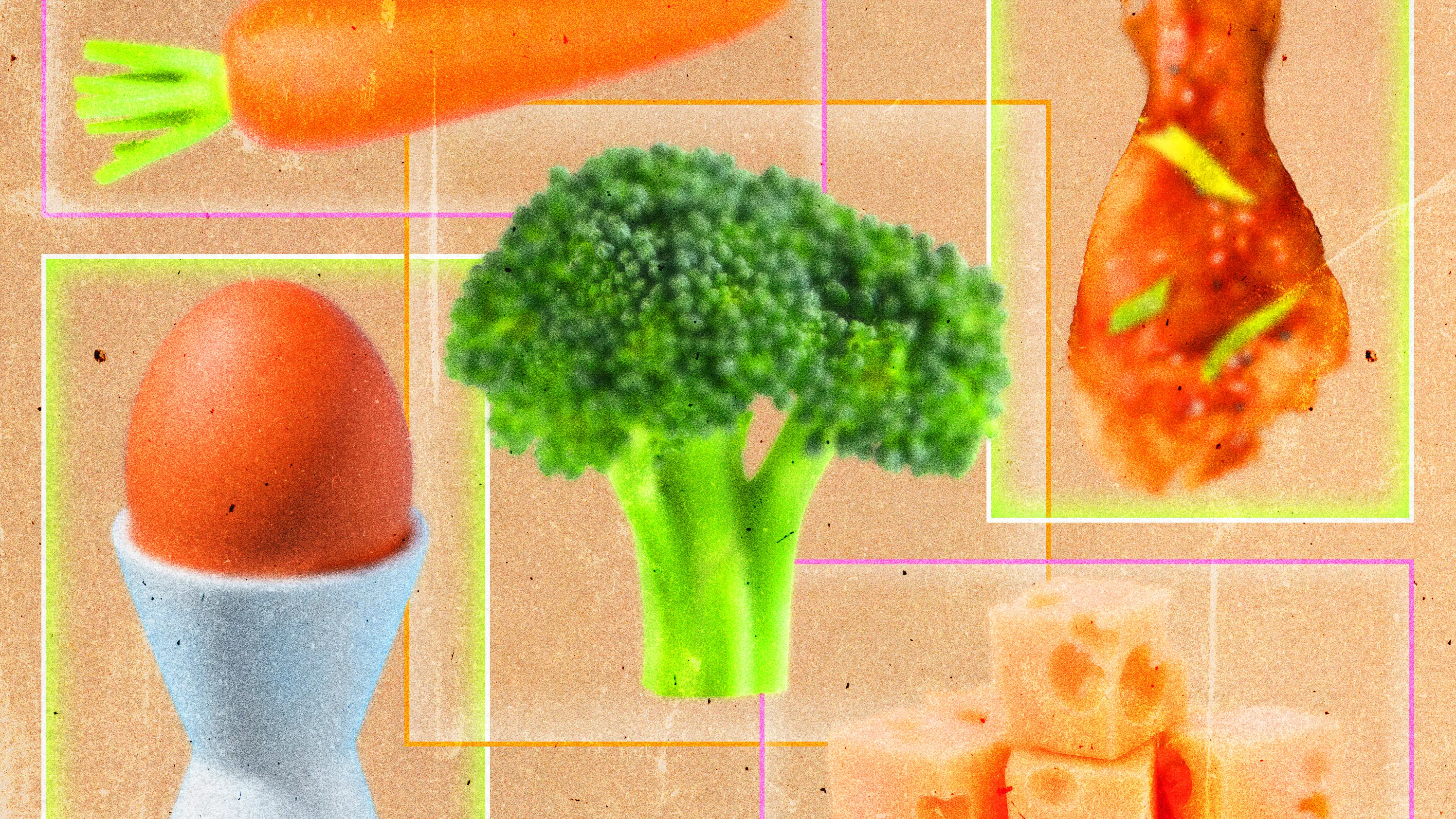By Emily Laurence
Copyright gq

Everyone’s talking about the anti-inflammatory diet. In part, that’s because inflammation is often used as an umbrella term to explain a myriad of health woes. It’s said to be the culprit of everything from minor bodily annoyances (like acne) to chronic and life-threatening conditions (like cancer).
Though there’s always a bit of truth to the accusations, like many of our chosen health-world villains, inflammation is slightly misunderstood. First off, you can’t blame it for everything. Inflammation does not cause inherited genetic conditions, broken bones, or disorders caused by nutritional deficiencies, for example. Second, it’s not always bad. Inflammation is the body’s natural, protective response to illness or injury. In the short term, this helps the body heal.
It’s chronic inflammation that’s the real danger. Chronic inflammation can impact the body in a slew of negative ways, including autoimmune diseases like rheumatoid arthritis, gastrointestinal issues, cardiovascular disease, and neurodegenerative diseases like Alzheimer’s and Parkinson’s.
One of the most science-backed ways to protect the body from chronic inflammation is by following the anti-inflammatory diet. “As its name suggests, the anti-inflammatory diet is meant to help reduce inflammation in the body,” says Parker Lane, RDN, a registered dietitian and owner of Fig Lane Nutrition. Carolyn Williams, RD, PhD, a registered dietitian and author of Meals That Heal, adds that the eating plan centers around foods that contain nutrients that actively protect against cell damage.
Both Lane and Dr. Williams say that anyone can benefit from the anti-inflammatory diet, but if you are already in relatively good health, you likely won’t notice any differences in how you feel day-to-day. But you can rest assured, both say, that you are lowering your risk of experiencing any chronic diseases in the future.
If you are currently experiencing any signs of inflammation (such as rheumatoid arthritis, inflammatory bowel disease, or have an autoimmune disease such as lupus), the dietitians we talked to say you can especially benefit from the eating plan and likely will notice a difference in how you feel short-term (namely, less symptoms).
Adrian Hernandez, RDN, a certified gastrointestinal dietitian nutritionist and owner of AEH Nutrition, says that individuals with an autoimmune condition can benefit from a type of anti-inflammatory diet called the autoimmune protocol. “This is highly restrictive and includes an ‘elimination phase’ where a person removes all grains, legumes, eggs, dairy, nuts, seeds, nightshades, food additives, and food chemicals. This elimination phase is usually recommended anywhere from four to 12 weeks. Then, the reintroduction of eliminated foods is phased in slowly. The pace at which a person reintroduces each food or food group is highly variable and dependent on the individual,” he says. Again, this is a more specialized version of the anti-inflammatory diet for those with an autoimmune condition.
Here’s the thing about any eating plan, including this one: You’re not going to stick with it long-term if you don’t know how to live your normal life while doing it. That’s why we talked to registered dietitians about how to face the biggest hurdles—like going out to eat and socializing at the bar—without falling off the anti-inflammatory wagon. Keep reading to see how it’s done.
What you can eat—and not eat—on the anti-inflammatory diet
If you’re going to commit to the anti-inflammatory diet, it’s important to know the rules. Here’s a rundown of what you can eat and not eat while following the eating plan, according to the dietitians we talked to.
Foods you can eat
Whole foods, including vegetables, fruit, and whole grains
Lean animal meats and plant-based proteins such as tofu, beans, and legumes
Eggs and poultry
Dairy (unless you have an intolerance or sensitivity to it)
Foods high in omega-3 fatty acids, like seafood, nuts, seeds, and olive oil
Fermented foods
Herbs and spices
Foods to avoid
Ultra-processed foods and drinks
Refined grains, like white pasta and bread
Fatty meats, like bacon and sausage
Think these lists look a lot like following the Mediterranean, DASH, or MIND diets? You’re right. Dr. Williams and Lane both say that these eating plans all fall under the anti-inflammatory diet umbrella.
Tips for following the anti-inflammatory diet
There are literally thousands of foods that are considered anti-inflammatory; this is by no means a restrictive eating plan. But that doesn’t mean there aren’t roadblocks. Can you still use protein powder or is it off-limits because it’s processed? What do you do when a craving for sweets hits? What should you order when you’re eating out? Below, dietitians tackle how to handle these situations and more.
1. Eliminate breakfast chaos
Breakfast tends to be the least planned meal of the day, which can lead to relying on ultra-processed, ready-to-eat foods like protein bars or a pastry from your go-to coffee shop. As you may expect, the key to avoiding these inflammatory traps is to be prepared, knowing what breakfasts you can make in less than five minutes and having the ingredients on hand to make it happen.
Hernandez is a fan of overnight oats, smoothies, or chia seed pudding topped with fruit for breakfast. For any of these three breakfast ideas, Lane recommends incorporating berries, which are loaded with inflammation-fighting antioxidants. If you’re making a smoothie, he recommends adding dark, leafy greens to your blender because they’re full of phytochemicals that reduce inflammation.
If you do have more time to devote to breakfast, Lane recommends making a breakfast burrito with eggs, beans, and a whole-grain tortilla. “Tofu scrambles are a great breakfast too,” he says.
2. Go for “clean” protein
All three dietitians say that protein powder can absolutely stay part of your routine, whether you’re incorporating it into your breakfast or you consume it post-workout. “A protein powder that just has the nutrient—like whey or pea protein—doesn’t have anything in it that’s pro-inflammatory and even though it’s processed, it’s going to help with muscle recovery, lowering inflammation,” Lane says. Dr. Williams adds to this, saying that the key is to choose a protein powder that doesn’t have added sugars or artificial ingredients, which are inflammatory.
3. Stock your pantry
If you’re a snacker, it’s important to stock your pantry with anti-inflammatory snacks that are ready-to-eat. Otherwise, there’s a good chance you’re going to reach for something ultra-processed. Some ideas Hernandez recommends include sliced veggies with hummus, air-popped popcorn, hard-boiled eggs, canned tuna or sardines, fermented or pickled veggies, yogurt, or dark chocolate.
Dr. Williams recommends having unsalted nuts or seeds in your pantry because the protein and saturated fat make them satiating. Or, she says to spend two minutes making avocado toast on whole grain bread—another way to get those filling saturated fats.
4. Drink in moderation
“Research says that a small amount of alcohol can be slightly anti-inflammatory,” Dr. Williams says, though she adds that it’s not anti-inflammatory enough for someone to start drinking alcohol if they don’t currently. To her point, a 2006 scientific study published in Atherosclerosis found that men who consumed one to two drinks a day had lower levels of an inflammatory protein in their blood than nondrinkers.
With this in mind, moderation truly is key. When socializing, Lane recommends enjoying one alcoholic drink (if you want to) and then switching over to a nonalcoholic option. No matter what type of drink you’re ordering, Dr. Williams says to be conscious of the added sugar, a major inflammation-causer.
5. Order food similar to what you’d cook at home
Eating out may seem like an inevitable way to break from your anti-inflammatory routine, but not if you’re smart about it. First, Lane says to consider how much you’re eating out. If you eat out every day for lunch, he recommends seeking out build-your-own-bowl chains like Chipotle, Chopt, or Tazza. These types of places, he says, tend to have plant-based or lean protein options, whole grains, and lots of veggies to choose from.
As for dinner, Dr. Williams and Lane both come back to the moderation approach. If you rarely eat out or it’s a special occasion, order whatever it is you really want. In the long-term, one specific meal isn’t going to impact your health too much. If you eat out regularly, all three dietitians say to go for an entrée that is made with the eating plan’s hero foods while forgoing anything fried or with fatty meats.
6. Never say never
All three dietitians we spoke to emphasized that following an anti-inflammatory diet isn’t an all-or-nothing approach. Dr. Williams emphasizes that this is meant to be an eating plan that’s followed long-term, which likely won’t happen if it means you can’t ever enjoy a juicy burger, french fries, or a cocktail.
Dr. Williams says that what matters is how you’re eating most of the time, not all the time. If you do want to eat a dish that’s traditionally prepared with inflammatory ingredients, Lane says that this is when seeking out anti-inflammatory swaps or recipes comes into play. This is 2025: You can find an anti-inflammatory version of whatever you’re craving online.
Remember, this is a way of eating designed to follow for life. As long as the majority of what you eat or drink fits within the plan, you’re doing it right. Enjoying steak frites or something deep-fried every now and then isn’t “messing up.” It’s part of living life.



